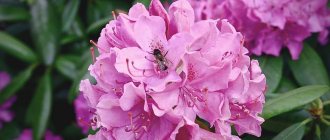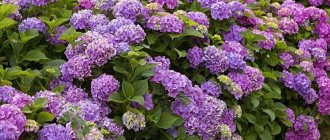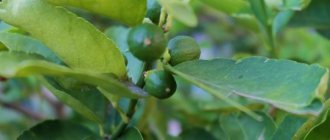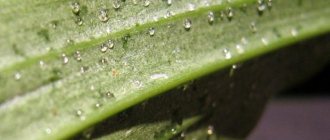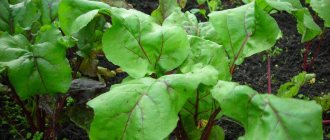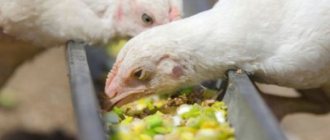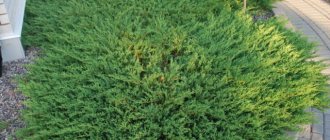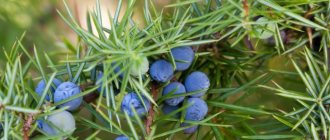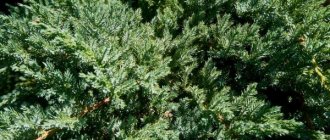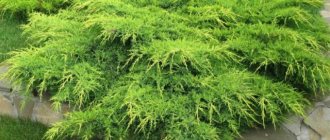- Biatorella cancer of juniper branches: treatment and control measures
- Measures to combat juniper biatorella canker
- Nectriosis, or necrosis of the bark of juniper branches: treatment and control measures
- Drying of juniper branches: treatment and control measures
- Juniper rust: treatment and control measures
- Measures to combat juniper rust
- Juniper schutte: treatment and control measures
- Juniper diseases: brown shutte - signs of disease and treatment
- Juniper Alternaria: signs of disease and treatment
- Juniper fusarium: signs of disease and treatment
- Video: remember juniper disease
It would seem that juniper is one of the most problem-free coniferous plants in the garden, but it turns out that it also has its own ailments. Sometimes, especially after winter, you can see a branch with brown needles on a juniper tree. This means that the juniper is sick. Dying of branches, yellow or brown needles can be the result of several juniper diseases .
Juniper diseases: signs and treatment.
Biatorella cancer of juniper branches: treatment and control measures
With Biatorella canker, a deep ulcer can be seen on the bark of the affected branch, which causes the individual juniper branch to dry out.
The causative agent of the disease is the pathogenic fungus Biatorella difformis (Fr.) Rehm., the conidial stage of the fungus Biatoridina pinasti Gol. et Sch.
When a juniper branch or bark is mechanically damaged, pathogenic fungi enter the wound and begin to develop there. Some cause bark necrosis, while others are causative agents of stem rot.
Cuttings of conifers in winter: (read more)
Once on the damaged area, the fungi spread in the tissues of the bark. The bark begins to turn brown and die. A deep ulcer forms in the damaged area, in which black fruiting bodies of the fungus form.
The death of the bark on a branch leads to the fact that all the needles on it turn yellow and dry out. Biatorella canker also affects other conifers.
Biatorella cancer on a pine tree.
Cancerous ulcer on the trunk.
Preventive measures
Constant care and preventive treatment of juniper will help prevent many diseases. But besides this, other procedures are also important to reduce the risk of diseases.
In order for the plant to remain healthy and have a beautiful appearance, you need to adhere to the rules of its maintenance.
- Necessary measures, such as choosing a place for planting, suitable soil for different types of crops, loosening, mulching and fertilizing, must be timely.
- First of all, you should pay attention to the planting material, which should be fresh and healthy. If there are any suspicions in this regard, it is better to plant such seedlings separately from other plants that are already successfully grown.
- During any work - replanting, pruning - any garden supplies, tools and containers must be thoroughly disinfected.
- Most plants of this species are affected by diseases due to the high acidity of the soil, with the exception of a few shrubs that prefer an acidic composition. This means that it is necessary to take care in advance about adding lime to the soil.
- The immunity and viability of the main organ, the root, largely depends on timely treatment with immunomodulatory agents. Judging by the reviews of gardeners, the most effective preparations that promote the formation and activity of the root system are the chelated microfertilizer “Siliplant” and the concentrated biostimulator “Super Humisol”, which regulates the basic life processes of juniper. You can use the unique growth stimulator "Epin Extra" or a biofertilizer produced by cultivating microorganisms - "Nikfan".
- Do not forget about seasonal fertilizers, which play an important role in the condition of the crop. If the soil is fed in spring, autumn, and, if necessary, in summer with the necessary minerals, this will ensure normal nutrition of the roots and above-ground parts and reduce the threat of infection.
- Insects found on branches and bark must be eliminated immediately, without waiting for them to multiply - a large number of pests most often cause irreversible damage and death of the conifer. Therefore, double or more use of strong insecticides will be required. As for prevention, the best way to protect bushes is to mulch their tree trunk space with pine bark.
- After winter, juniper trees in the country often turn yellow, and this is not always the so-called physiological dryness due to frozen soil and lack of moisture. The larvae of some pests are able to overwinter on crops, so at the very beginning of spring it is necessary to set traps for caterpillars and carry out sanitary trimming of the affected branches.
It must be remembered that a prerequisite for the disease can be poorly drained soil, too close planting of shrubs, lack of lighting, and the presence of weeds.
Infestation by pests and infections does not occur if the conditions for growing juniper are favorable. In most cases, the causes of diseases are violations of agricultural technology requirements and the gardener’s own mistakes.
For more information on diseases and pests of juniper, see below.
Not everyone knows what juniper diseases are and their treatment. But in order to achieve the desired result and return the plant to an attractive appearance, you need to learn to recognize diseases and take action at the first symptoms.
Measures to combat juniper biatorella canker
Dried juniper branches need to be trimmed to healthy tissue, all wounds and cuts should be treated with a solution of copper sulfate, 1% solution of Bordeaux mixture (you can use substitutes - HOM, Abiga-Peak). Affected branches must be destroyed to prevent the spread of the fungus.
For prevention : in case of mechanical damage to the bark or pruning of juniper branches, immediately cover all cuts and wounds with garden varnish.
Every spring, after the snow melts, and every autumn, treat juniper with a 1% solution of Bordeaux mixture or its substitutes; if necessary, the same treatment is carried out in the summer.
Juniper care
Juniper is an undemanding plant when it comes to soil. It also needs watering infrequently, the only thing is that if the summer is dry, then it is necessary to water. Young plants need to loosen the soil and get rid of weeds. The best time to spray juniper is in the evening. Juniper grows best in soil with average moisture.
After planting, you immediately need to mulch with peat or wood chips. Plants that love warmth need to be mulched for the winter. In the spring, you need to clear the plant of mulch, as it can cause the root collar to rot.
Juniper grows very slowly, and this must be taken into account when pruning it. Dry branches are subject to pruning. In the first year after planting, young plants need to be covered with film for the winter.
Author of the article:
Sokolova Nina Vladimirovna |
Herbalist Education: Diploma in General Medicine and Therapy received from the University named after N.I. Pirogov (2005 and 2006). Advanced training at the Department of Herbal Medicine at the Moscow People's Friendship University (2008). Our authors
Nectriosis, or necrosis of the bark of juniper branches: treatment and control measures
This disease is also considered cancerous. The causative agent of the disease is the fungus Nectria cucurbitula (Tode) Fr., the conidial stage of the fungus Zythia cucurbitula Sacc.
When the bark of a juniper branch is mechanically damaged, brick-red fruiting bodies form at the site of the lesion, sporulate up to 2 mm in diameter, and over time they turn black and dry out. The affected branch turns yellow and gradually dries out. The mycelium is preserved in the bark of affected branches and plant debris.
Measures to combat necrosis of the bark of juniper branches are the same as for biatorella cancer.
Nectriosis, or necrosis of the branch bark.
Nectriosis, or necrosis of the branch bark.
Juniper in landscape design
Juniper can enhance any landscape design, and both juniper shrubs and trees look great. They are often grouped together, creating a kind of green hedges, although single plantings can often be seen.
Low-growing junipers look great on slopes and in the general decor of rocky gardens. By planting juniper, you can prevent soil erosion and strengthen existing slopes. Juniper is easy to care for and can be easily shaped and trimmed.
Juniper looks great paired with flowering shrubs, perennial plants and cereal species used for decorative purposes. However, juniper has one drawback - the plant does not tolerate polluted air and smoke, which is why shrubs and trees are practically not found in urban environments. But junipers planted at the dacha will delight their owners with a pleasant, powerful aroma of needles, which intensifies after rain or when direct sunlight hits the branches.
Juniper is used for the design of residential premises. For this purpose, dwarf forms of the plant are used. Juniper feels good “in captivity”, however, it needs regular moistening in the form of spraying. Designers skillfully create juniper bonsai, using miniature seedlings in their work. They have the exact shape of a mature tree, which looks very attractive. It is important to keep these dwarf shrubs out of full sun as they prefer partial shade. If you plan to take such mini-junipers out into the fresh air, you should protect them from strong gusts of wind. In addition, ornamental trees are sensitive to frost, so their tops should be covered if cold weather is expected. The needles are sensitive to snow, which can cause burns on the leaves, so there should be a canopy over the plantings.
Shrubs should be planted in ceramic containers, which should be quite deep. It is important to remove yellow needles from trees, as well as wash the trunk and leaves using a watering can for this purpose. Bonsai bark can be easily cleaned with a toothbrush. If the tree is large, you can use a regular clothes brush.
Immediately after planting, the young bonsai begins to grow at an accelerated pace, however, later its growth slows down. Juniper does not like frequent transplants; it is enough to update its place of residence once every 5 years. It is best to do this in March. After replanting into a larger container, you should expect the bonsai to increase in size. If there is no desire to increase the height of the plant, then 1/3 of the roots can be cut off during replanting. Compost, leaf soil and river sand, taken in equal proportions, are well suited as soil.
To prevent the juniper from growing in breadth and height, you need to pinch off all the young shoots from above. It is also important to pinch those shoots that are located inside the crown. This must be done in autumn or spring, but under no circumstances in winter.
Almost any style of bonsai can be grown from junipers. You can use fishing line to shape wood. It is wound in the fall and removed after 8 months. A year later, these manipulations can be repeated. This is done until the tree is completely formed and takes on the desired shape.
Drying of juniper branches: treatment and control measures
The causative agents of branch drying are several fungi: Cytospora pini Desm., Diplodia juniperi West., Hendersonia notha Sacc. et Br., Phoma juniperi (Desm.) Sacc., Phomopsis juniperovjra Haahn., Rhabdospora sabinae Sacc. et Fautr.
When a branch is mechanically damaged, the fungus penetrates the bark tissue. The bark dies, the needles turn yellow and fall off. At the site where the branch is damaged, the formation of black fruiting bodies of the wintering stage of the fungus can be observed. The spread of the disease is facilitated by dense planting.
Measures to combat the drying out of juniper branches are the same as for biatorella cancer.
Drying of juniper branches.
Drying of juniper branches.
Preventive actions
It is easier to prevent a disease than to treat it. Preventive measures taken in a timely and regular manner can ensure the health of the juniper and protect it from diseases and pests. The basis of juniper care is:
- Compliance with the rules of agricultural technology - site selection, soil composition, mulching, loosening, fertilizing.
- Timely application of fertilizers and immunomodulators. “Super-humisol”, “Epin-extra”, “Siliplant”, “Nikfan” have proven themselves well as root and foliar fertilizers.
- Regular sterilization of garden tools, soil, containers for seedlings.
- Liming of acidified soils. Excessive soil acidity contributes to the occurrence of fungal and viral diseases.
- Complete nutrition of juniper, forming immunity, sufficient supply of potassium, phosphorus, nitrogen.
- Using healthy planting material and carrying out quarantine measures for new plants.
- Destruction of harmful insects - carriers of diseases.
- Soaking the roots before planting in Fitosporin, Vitaros, Maxim.
Favorable conditions for the development of diseases are dense plantings, excessive shade, high humidity, and soil acidity. When choosing a place to plant juniper, you need to choose lighted and ventilated areas with light, well-drained soil. To prevent diseases, the plant should be treated twice a year with solutions containing high copper content, colloidal sulfur, and systemic fungicides. Removed branches, bark and needles that fall off during illness must be burned.
Juniper rust: treatment and control measures
In spring, on the branches and needles of juniper you can see convex yellow-brown gelatinous round formations - sporulation of the rust fungus Gymnosporangium confusum Plowr., Gymnosporangium Juniperinum Mart., Gymnosporangium sabinae (Disks.) Wint.
Over time, juniper branches at the site of rust damage thicken, become deformed and crack.
At the beginning of autumn, the orange pustules darken and the overwintering stage of the fungus develops. The rust fungus overwinters not only in the affected juniper bark, but also on other plants and plant debris.
Juniper rust.
Juniper rust.
How to tell if there is rust on juniper
Most often, you can discover that a juniper bush has been affected by a disease in the spring. At this time, the plant’s immune system is still weak after a difficult winter period.
The following factors aggravate her weakness:
- excessive soil moisture after floods, rising groundwater levels;
- return frosts;
- sudden temperature changes that damage the bark, thereby making it vulnerable to the penetration of pathogens.
Did you know? In ancient times, juniper bushes were credited with magical properties. They took their branches with them on the road as amulets, so that they would not encounter troubles along the way.
Infectious diseases caused by fungi pose a huge danger to coniferous shrubs . One of the most unpleasant diseases, which can significantly reduce the decorative value of a plant and even destroy it, is rust caused by pathogenic fungi Gymnosporangium confusum, G. juniperinum, G. sabinae.
You can tell that they have settled on a bush by the characteristic symptoms:
- the appearance of bright orange fruiting bodies in May – June;
- thickenings, “swellings” on the branches;
- drying of shoots;
- needle fall.
When infected with blister rust, thickened, swollen, curved areas and spider-like growths appear on the branches . The plant looks depressed. After a year and a half, in the spring, a jelly-like substance forms in them, in which spores mature, which are subsequently carried throughout the area over a distance of several hundred meters.
Measures to combat juniper rust
At the first detection of rusty spots, you must immediately remove the affected juniper needles and treat them with fungicides with contact and systemic activity, such as Topaz, Ordan, Folicur, Falcon, Fundazol. All affected plant debris must be destroyed.
As a preventive measure, in early spring and autumn, spraying should be carried out with a 1% solution of Bordeaux or Burgundy liquid, iron or copper sulfate.
In autumn, plant debris and fallen leaves need to be removed from the garden, since pathogens not only of rust, but also of other diseases can overwinter on them.
Pear and juniper rust
This year I encountered the same problem - spots appeared on the pear. I am a beginner summer resident, I don’t know much and am just learning, so I asked this question on the website 7dach.ru in the hope that experienced summer residents will help me. And so it happened. Thanks to everyone who helped. And in this article I want to summarize the knowledge gained, maybe other readers will find it interesting and useful. These are the spots that appeared on my pear
Of course, I became concerned about this phenomenon, turned to the site for help, and began to study the Internet. This is what she answered me
- Olga Voronova) EXPERT
- written July 19, 2015, 10:13
- THANKS HER!
“It's rust. Moreover, this fungal disease comes from junipers, which are located either at your place or at a neighbor’s, in general, within a radius of 100 m. It is not particularly noticeable on the junipers themselves, as if individual branches were burnt. Juniper is the intermediate host of this fungus. Rust itself can be dangerous if the wood is severely damaged. Your degree is not strong. But who knows what will happen next. There will either be no harvest at all or little, but the main thing is that because of this rust, the tree greatly reduces its winter hardiness, and if frosts above 20 occur in winter, it may freeze. The remedy for saving your pear is the drug Skor. Phytosporin will not help, and neither will other fungicides. Bordeaux mixture is believed to also help, but it didn’t help me, only Skor helped me. But treat not only the pear, but also junipers, if there are any on the site. „ This is what they write about the drug “SKOR”
The drug SKOR is a systemic fungicide with a long-term preventive and pronounced therapeutic effect intended to protect fruit crops from scab, powdery mildew, leaf curl, clasterosporiosis, coccomycosis; sugar beets - against powdery mildew and cercospora fungicides from other chemical classes Active ingredient: Difenoconazole Properties: - highly effective protection of fruits and leaves - long-lasting action - low consumption rate - best preventive and therapeutic effect - systemic effect, rapid penetration into plant tissues: no washed off by rain 2 hours after treatment - complete absence of phytotoxicity for all phenophases of the apple tree - absence of cross-resistance with Advantages: - an important drug for alternating with fungicides of other chemical classes in anti-resistant programs - the most reliable and effective fungicide from the chemical class of triazoles to combat the most important diseases fruit - beneficial effect on the plant - flexible terms of application (pink bud, beginning of flowering, flowering, ovary, fruit growth) - saving costs and time - user-friendly
Juniper schutte: treatment and control measures
Schutte causes browning and drying out of juniper needles. The causative agent of the disease is the fungus Lophodermium juniperinum (Fr.) deNot.
In the spring, in May, the needles on last year's juniper shoots suddenly turn brown, but do not fall off for a long time. A black coating appears on brown needles - this is the formation of black shiny fruiting bodies of the pathogen fungus.
At risk are weakened plants, as well as those planted in the shade. Schutte develops very quickly in conditions of high humidity and can lead to the death of juniper. The harmfulness of juniper shutte increases several times with prolonged melting of high snow cover. The infection persists in plant debris.
Measures to combat juniper shutte are the same as for biatorella cancer.
Schutte on conifers.
Juniper Schutte.
Plot
3 votes
+
Vote for!
—
Vote against!
Junipers are a fairly large group of evergreen conifers of the cypress family. For landscaping gardening areas and summer cottages, juniper trees and shrubs with a height of 150 cm to 20 m, of various shapes - creeping, bushy, spherical or erect, are planted. But, despite all its beauty and unpretentiousness, improper care and diseases can cause severe harm to the plant. The article will discuss how to properly care for juniper and means of pest control.
- Pests of juniper Sawfly
- Fusarium (tracheomycosis wilt)
Young junipers have needle-shaped foliage, which changes with age, depending on the variety, and takes on the appearance of small scales. Junipers have a powerful root system, but grow extremely slowly; thanks to this feature, the growth period of some representatives can last up to 1000 years.
Juniper care
- Conifers are crops that do not require special care. Basic care consists of watering, spraying, loosening the soil and removing weeds.
- It is important to protect the plant from sunburn in early spring, and in winter to protect the crown from snowball pressure.
- And if the right place for planting was chosen - a sunny, bright clearing, with light, nutritious soil - then the juniper will delight you with healthy, dense foliage and an attractive appearance for many years.
Fertilizer
- Young juniper needs annual fertilization, starting from the second year after planting. Older representatives need to be fed once every 2-3 years. Rotted manure, superphosphate, ammonium nitrate and other mineral fertilizers are used as fertilizer.
- The nutrient mixture is applied during the period of bud swelling (late April - early June) into the ground around the plant, to a depth of 10 cm, and then watered. In this case, you should not pour fertilizer directly to the trunk or branches of plants (retreat 15 cm).
- Also during the summer season, it is allowed to “feed” the juniper with a special complex fertilizer for conifers. The composition includes such elements as:
- magnesium;
- potassium;
- iron;
- copper;
- manganese;
- zinc;
- phosphorus.
- Thanks to this combination, the juniper receives complete nutrition, which has a positive effect on the color and brightness of the needles, resistance to adverse weather factors, as well as strengthening the immune system.
- When buying fertilizer, you should give preference to one in which the nitrogen content is minimal, especially if you plan to apply it in the autumn. Since this negatively affects the frost resistance of juniper: active growth of shoots occurs, which do not have time to become woody in the winter and freeze out. At the same time, juniper needs a large amount of magnesium, a deficiency of which causes yellowing of the apical shoots.
- Junipers respond well to the application of liquid organic fertilizers based on vermicompost diluted with water into the soil. This feeding stimulates the growth of the root system and activates photosynthesis processes.
- The use of any fertilizer must comply with the recommendations on the package, since junipers are plants that are better to underfeed than to overfeed.
Watering and spraying
- Juniper is a drought-resistant plant, but if the summer is too dry and hot, then the plantings should be watered generously 2-3 times per season. Up to 30 liters of water are poured onto one bush. Mostly young and recently transplanted plants need watering. This is due to the fact that their roots have not yet gone deep into the soil and are located close to the surface. Watering is carried out in the morning or in the evening.
- In the autumn, before finally preparing the plant for hibernation, it is watered abundantly (up to 10 liters of water per 1 sq.m.), this measure will help the juniper to overwinter better.
- A large amount of dust settles on the branches and needles of plants, which spoils the appearance and clogs the pores, interfering with the process of photosynthesis. As it gets dirty (about 1-2 times a month), it is necessary to spray the crown. The procedure is carried out in the morning or evening to prevent sunburn on the foliage, since the water acts like a lens, attracting the sun's rays.
- The stream of water should not be directed directly at the juniper, otherwise the fragile shoots may break due to the strong pressure. This has a particularly bad effect on the shape of columnar representatives. Newly transplanted juniper can be sprayed with stress-relieving drugs added to the water: Zircon, Epin-Extra, Ribav and others.
Loosening and mulching
- Junipers need to loosen the soil and mulch it after each watering and weeding. Young plants have small roots located close to the surface, so the soil should be loosened carefully and shallowly.
- Mulching is necessary to prevent the formation of a dense earthen crust, rapid drying of the soil, and also to inhibit the growth of weeds. In addition, thanks to mulching, you can avoid burns of the root system from the bright sun or its freezing during recurrent frosts. In addition, this is an excellent tool for the development of special soil microflora and mycorrhiza, with the help of which plants receive more nutrients and water from the soil.
- A variety of crushed material is used as mulch: peat, sawdust, conifer bark, wood chips or nutshells, sprinkled in a layer of 5-10 cm. Mulch also has a decorative function, giving the juniper composition a complete look.
Pruning
- Juniper is used in many gardening compositions; it can be planted in small groups or single representatives. Most of its species do not need pruning, but when forming a hedge, it is necessary. The plant tolerates pruning well, so it is quite easy to shape its crown in different shapes - pyramidal, spherical, creeping or columnar. Below are photos of juniper of various forms.
Advice: do not forget that most of these are slow-growing plants, so they should be pruned very carefully.
- When forming a garden composition from several juniper plants, it is important to maintain a distance between plantings so that nearby plants do not shade each other:
- fast-growing species are planted at a distance of 3-4 m;
- slow-growing ones can be planted at a distance of 1-3 m from each other;
- creeping species are planted in groups of 2-4 pieces. per 1 sq.m.
- If the conditions have not been met and neighboring branches interfere with the full development of plants, then pruning must be done.
- It is important to remove dried, damaged branches and broken shoots throughout the season. The best time for crown formation is considered to be spring, before buds open. Junipers used as hedges are pruned in mid-summer. It is not recommended to do a haircut in the autumn, as this has a bad effect on the wintering of plants.
Preparing for winter
- Conifers most often belong to frost-resistant crops, but some varieties do not tolerate harsh climates well, so for the winter they should be covered with spruce branches, and the ground around should be mulched with a layer of sawdust or peat (up to 10 cm), which is raked in the spring so that the roots do not rot out.
- Young plants (up to 3-4 years old) also need to be covered for the winter. In addition, if the juniper has a spreading crown or pyramidal and columnar shapes, then the branches for the winter should not be tied too tightly with twine or twine, so as not to damage them with a snow cap.
- It is better not to cover an adult juniper that tolerates low temperatures well, as this can lead to undesirable consequences - during winter thaws, fungal diseases begin to develop under the covering material. However, they need to be shaded for the winter using a net placed on the sunny side.
- Abundant autumn watering helps junipers to successfully overwinter. If the crown was formed (trimmed) at the end of September-October, then the plant should be covered.
- The following materials are used for shelter:
- sackcloth;
- kraft paper or regular newspapers;
- nonwoven materials (spunbond, lutrasil, agrospan and others).
- A material that does not allow air to pass through will not work. The plant must breathe, so when wrapping the shelter around the juniper, you should leave an open space, preferably on the shady side, to prevent exposure to bright sunlight and the possibility of burns to the crown.
- The cover must be removed carefully so as not to damage the fragile juniper after hibernation. It is best to do this at the end of April, when the earth has already warmed up slightly and the root system begins to receive nutrition. A cloudy, windless day is chosen so that the plant gradually adapts to changing conditions.
Diseases and pests
Junipers have fairly durable wood that is resistant to rot and the harmful effects of insects. But despite this, plants have common diseases and pests that need to be controlled.
Juniper pests
Conifers suffer from insect attacks, perhaps even more than deciduous trees. After all, the needles grow for many years and if they are damaged, the plant takes on an unkempt, painful appearance. Therefore, it is so important to promptly detect and prevent the spread of pests.
Sawfly
- A small herbivorous insect with complete metamorphosis. Sawfly larvae cause great harm to juniper. It's quite easy to recognize them. They are green in color, similar to caterpillars, but endowed with eight pairs of legs, three dark stripes along the body, a brown head with two simple eyes.
- Female pests begin to fly in late summer or early autumn. They lay eggs inside twigs and needles. In places where such oviposition occurs, slight yellowing and tiny cuts can be seen. The larvae appear in May-June, live in nests, and spread by migration. They damage the internal tissues of shoots and needles, completely destroying one branch and moving to the next. The life cycle of the larvae is 20-30 days, after which they crawl to the ground under the plant and pupate, and in the fall the females reappear and lay eggs.
- As control measures, the crowns are treated in May-June with biological products, for example “Lepidotsid”, chemical contact insecticides, for example “Korbofos” and drugs such as “Decis”, “Kinmiks” or “Benzophosphate”. Spray should be done twice, with a break of 2-4 weeks.
- In addition, it is necessary to shake off damaged branches from time to time and loosen the tree trunk circles; also in June-July you can water the juniper with a weak solution of ash.
Aphid
- These are small insects, green or brown in color, living in colonies. They appear in early spring from eggs laid in autumn.
- They settle mainly on young shoots and feed on the sap of the plant, depriving it of its vitality. Peak aphid activity occurs in June. If one plant is severely damaged, the aphid colony moves to nearby growing species. It is necessary to regularly inspect juniper plantings and take active control measures at the first signs of aphids.
- Aphids can be controlled using various methods. For example, collect aphids with your hands or spray infected plants with ordinary water under pressure. Or spray the juniper with preparations such as Fitoverm or Karbofos twice, every 10-15 days. Folk remedies will also help - infusions of garlic, hot pepper, wormwood or tomato leaves.
- There are plants that repel aphids. For example, under juniper you can plant perennial flowers from the aster family - pyrethrum. They will not only help get rid of the pest, but also decorate the garden.
Mining moth
- A type of pest butterfly that damages plant needles. It received this name because of the feeding method of the caterpillars, which mine the needles - they eat away the inside, leaving the skin intact.
- Control measures include the use of a solution of the drug "Decisa", which is sprayed on juniper 2 times, with an interval of 15-20 days. It is also necessary to dig up row spacing in late autumn and cultivate the soil in tree trunk circles; this measure leads to the death of most moth pupae in winter. In addition, the trunks should be cleared of old bark, and any damage found should be repaired with soda water.
Needle mite
- A small insect that is yellow, red, green or white. Mite infestation manifests itself as an increase in the tips of the needles. For destruction, the drugs “Karate”, “Akarin” or “Neoron” are used. Processing should be done in early May.
- Another effective measure can be watering the juniper crown with warm water, with the addition of laundry soap, several times a season. You can also use folk remedies, such as infusions of tobacco, horseradish leaves or garlic - spray the plant after 5-7 days, for a month.
Juniper scale insect
- A small insect, pale yellow in color, oblong or round in shape. They nest in cones or on pine needles and feed on plant sap, which leads to slow growth and sometimes even death of juniper. Harm is caused by both larvae and female insects.
- It is necessary to regularly inspect plants and carry out immediate control at the first signs of damage. Measures to destroy the pest include the use of various insecticidal preparations: Karbofos, Aktara, Fosbecid or Actellik.
- You should also wash the plants for a week with a weak solution of laundry soap, remembering to rinse the juniper with clean water afterwards. Severely damaged branches should be cut out and burned.
Juniper diseases
All diseases to which juniper is exposed are curable only if measures are taken in time. Fungal spores cause the greatest harm to conifers. Experts have identified more than 40 different types of pathogenic fungi that are causative agents of juniper diseases.
Fusarium (tracheomycosis wilt)
- The causative agent of the disease is the Fusarium fungus. The disease manifests itself in yellowing or redness of the needles, a thinning crown and subsequent drying out of the plant. The disease begins from the root system, fungal spores penetrate the internal tissues and block the access of nutrients. Juniper roots turn brown and then die. The fungus causes the greatest harm to young plants.
- As soon as the first signs appear, all diseased specimens should be promptly removed. As a preventive measure, before planting, treat the root system of plants with one of the following fungicidal preparations: Vitaros, Baktofit, Fitosporin-M or Maxim. The soil under the plants is shed with a solution of the drug “Alirin-B” or “Gamair”, and the plant itself can be sprayed with a solution of “Fundazol”.
Alternaria blight
- The cause of the disease is the Alternaria fungus, which attacks the root system of young plants. As a result, the needles acquire a brown tint, and a dark coating appears on the branches.
- As a rule, the disease is caused by dense planting of seedlings. To combat the fungus, it is necessary to destroy all affected branches, disinfect the wounds with a solution of copper sulfate and cover them with garden varnish. In spring, spray with Bordeaux mixture or Abiga-Peak.
Juniper rust
- The most common plant disease is considered to be “rust”; the causative agent of the disease is the fungus Gymnosporangium and several of its species.
- Its peculiarity is that for full development it requires a change of place of residence. Initially, in May-June, the mushrooms settle on fruit and berry trees, and only by mid-summer are the ripened spores carried by the wind to the juniper.
- As a control measure, the Arcerida solution is used, which needs to be sprayed on the diseased plant every 10 days until complete recovery. Spraying with a solution of Bordeaux mixture and disinfecting the resulting wounds with copper sulfate will also help. In addition, you should not combine planting juniper with fruit and berry crops. All diseased plants must be destroyed. If the juniper is partially damaged, then in the spring the infected branches are cut out and burned.
- Recognizing rust is quite simple - orange spots, slightly convex, on the needles or petioles of the plant. When cracking, powder appears from the stain - spores of the rust fungus. The disease must be treated immediately as soon as it is detected, otherwise it can lead to the death of shoots, weakening of the general condition of the juniper and its death. Spores appear in May-July; prolonged rains and low air temperatures can contribute to the spread of the disease.
Schutte
- This is a disease caused by Herpotrichia or Lophodermium fungi. The disease is characterized by a change in the color of the needles, their death and falling. The disease develops most intensively with high humidity and dense crown.
- The fungus is especially parasitic on young plants. Control measures include pruning dry branches and burning them, as well as collecting fallen pine needles. In spring, you can spray the plant with Bordeaux mixture.
With proper care, even an old juniper will become a wonderful decoration for a garden or personal plot, in addition, it is an excellent disinfectant - 1 hectare of juniper per day can cleanse the atmosphere of pathogens in a large city.
Juniper diseases: brown shutte - signs of disease and treatment
Another name for brown schutte is softwood brown snow mold. Snow mold can also be observed after the snow melts on other plants, for example, on lawn grass. In the spring, after being freed from the snow, on the branches of the juniper you can see yellow or brown needles, entangled with grayish snow mold - cobwebby mycelium. Over time, the mold becomes black-brown, thickens and seems to glue the needles together. Small black fruiting bodies of the fungus Herpotrichia nigra Karst form on the affected needles. Juniper needles turn brown, dry out, and do not fall off for a long time. Thin branches die. The mycelium is preserved in needles and plant debris.
Schutte brown spreads more strongly in conditions of high humidity and when plantings are very dense. Young and weakened plants are most susceptible to the disease.
Measures to combat Schutte brown are the same as for biatorella cancer.
Brown chute on juniper.
Brown shutte on a pine tree.
How to recognize rust
Rust on shrubs is a fungal disease. The source of the disease is basidiomycetes, members of the Pucciniaceae family.
The disease affects many trees and shrubs. It is believed that the disease spreads from plant to plant; for example, juniper can infect a pear. Plants can infect each other even at a distance of 100 m.
Rust on junipers is considered a chronic disease. Many species of this plant suffer from it if they are not protected.
Rust appears as orange and red spots on the needles, and orange bubble formations appear on the shoots over time.
Juniper Alternaria: signs of disease and treatment
Alternaria causes drying out of juniper needles and branches. The causative agent of Alternaria blight is the fungus Alternaria tenuis Nees. A velvety black coating forms on brown needles and branches affected by Alternaria. The needles fall off, the branches become bare and dry out.
Alternaria blight often appears when plantings are dense on the branches of the lower tier. The pathogen is preserved in the needles and bark of juniper branches, plant debris (not only conifers, Alternaria also affects vegetable crops, for example, cabbage, potatoes).
Measures to combat juniper Alternaria are the same as for Biatorella canker.
Alternaria of juniper.
Effective methods of controlling juniper diseases and pests
Coniferous evergreen shrubs decorate almost every summer cottage. They captivate with their decorative effect, which lasts throughout the year, ease of care, and resistance to cold and adverse environmental factors. However, like most ornamental plants, juniper in the garden can get sick and be attacked by pests. We’ll talk about how to protect shrubs from such troubles in this article.
Did you know? In addition to being decorative, juniper has soil and water conservation significance. Essential oil is obtained from its shoots, and the berries are used in folk medicine.
Juniper fusarium: signs of disease and treatment
Fusarium wilt is caused by the fungi Fusarium oxysporum and Fusarium sambucinum. The fungus, through mechanical damage to the bark, penetrates the vascular system of the plant, clogs it, causing the death of the juniper roots. The access of nutrients to the above-ground part of the plant is stopped. The needles, starting from the upper branches, turn yellow, red and fall off, the plants gradually dry out completely. On the affected areas of juniper, especially on the roots and basal parts, in conditions of high humidity you can see grayish-white sporulation of the fungus.
Young and weakened plants are most susceptible to Fusarium wilt. Fusarium remains in plant debris. Infection can also occur through planting material or contaminated soil. Heavy clay soil, insufficient lighting, low-lying areas with stagnation of melt and waste water, and high levels of groundwater also provoke the development of fusarium.
Fusarium of conifers.
Fusarium of juniper.
Measures to combat fusarium wilt of juniper: compliance with agricultural practices and basic requirements for planting juniper. At the first symptoms of wilting and root rot of juniper, the soil under the plant is spilled with a solution of a fungicide preparation: Fitosporin-reanimator, Fitosporin M, Fundazol, Alirin-B, copper sulfate, copper oxychloride, 1% solution of Bordeaux mixture.
For prevention purposes, in spring and autumn, spraying with copper sulfate or a 1% solution of Bordeaux mixture is carried out. At the first signs of fusarium or tracheomycosis, it is necessary to remove all dried plants from the area along with the roots with the complete destruction of all plant debris.
Before planting new plants with an open root system, their roots are treated in a solution of the fungicide Fundazol, Maxim, Fitosporin, etc. Seedlings with a closed root system after planting are shed with a solution of the same fungicides.
Sometimes, in spring, juniper stands with red needles, especially on the south side. This is not an infection, but a sunburn . In winter, in January-February, when sunny days come, from dazzling white snow, sun, and severe frost, the needles quickly lose moisture, and there is no way to replenish it - the root system is in frozen ground. To prevent this from happening, you need to prepare coniferous plants for winter in the fall. Cover the root system in a timely manner with a thick layer of dry leaves, humus, and sand; this will insulate the root system and help the juniper cope with dry frost. Also, in the fall, the juniper needs to be wrapped in burlap or agrospan to shade the crown from the bright winter sun.
Sunburn of conifers.
Juniper sunburn.
Juniper has many diseases, and sometimes they can only be dealt with in the laboratory of the Quarantine Service. But we can reduce the risk of developing juniper diseases with the simplest measures: avoid dense plantings, provide good ventilation to already growing plants, do not plant juniper in heavy shade or in low-lying areas with stagnant water. When pruning branches, always use a garden varnish to prevent the mycelium from getting on the fresh cut, and to deal with pests that carry the infection in a timely manner.
Linden thyrostromosis: (read more)
Every spring and autumn, it is recommended to carry out preventive spraying with a 1% solution of Bordeaux mixture or copper sulfate not only for conifers, but also for all plants in the garden: fruit trees and shrubs, grapes, roses, hydrangeas and other perennial ornamental plants. We must always remember that pathogens can persist not only on junipers, but also on other plants, even weeds. Therefore, it is recommended to remove all plant debris from beds and flower beds both in autumn and spring.
How to deal with juniper pests
Juniper on the site can suffer not only from fungi, but also from insects. It is easier to cope with pests than with diseases, but only with timely treatment.
Gall midges
Gall midges are small mosquitoes that lay larvae on juniper shoots. Pests feed on plant juices; as a result of their activity, unnatural oblong galls are formed on the branches - bright reddish growths.
When infested with gall midges, uneven orange growths appear on the juniper
If you do not fight gall midges, the coniferous shrub will lose its decorative effect and weaken. When symptoms appear, you need to cut off the affected branches and treat the plant with Actellik or Intavir. Preventive spraying has a good effect; it is carried out in the spring, during the active growth of shoots.
Angular-winged pine moth
The moth is a beautiful dark brown or red-brown butterfly with light spots on the wings. Most often, the pest attacks juniper in hot summers and warm autumns. The main danger is the caterpillars - first bright green, and then blue or yellow-green with white stripes on the body.
Pine moth caterpillars eat juniper needles
The moth eats the needles, leaving characteristic notches on the needles. In autumn, the pest pupates in the plant litter in the soil and waits out the winter there. To combat caterpillars, you should be especially careful to clear the area of fallen pine needles before the onset of cold weather. When symptoms of moth appear, the juniper is sprayed with Baytex and Arsmal; the plant should be treated prophylactically in early spring.
Spruce spider mite
You can recognize the presence of the pest by yellow spots on the crown, and with a serious infection, a thick white web appears on the branches. The mite not only feeds on the juices of the pine needles, but also disrupts the photosynthesis processes of the bush, which is why the juniper begins to dry out and crumble even faster.
When infected with spider mites, juniper branches become covered with a light cobweb
The pest is especially dangerous for young plants; if left unchecked, it can completely destroy plantings within a season. To treat spruce spider mites, you need to treat the juniper with acaricidal preparations - Actellik and Karate.
Snails
You don’t see snails on junipers very often; the mollusks mostly attack the plant during periods of prolonged rains. Shrubs located in the shade and on moist soil are at particular risk. Snails feed on needles and soft young shoots, reproduce quickly and can cause great damage to plantings.
In rainy weather, snails can eat juniper needles
Pest control is carried out mainly preventively - soil moisture is controlled and bushes are regularly thinned. If snails do appear, you need to collect them from juniper branches manually. To repel the pest, lime is scattered in the tree trunk circle; you can also mulch the soil with cut straw - gastropods do not like to move on prickly surfaces.
Juniper sawfly
The adult pest looks like a small greenish beetle with a brown head, and the larvae are black-green striped false caterpillars. The insect develops in the top layer of soil, in the spring it moves to the trunk and shoots and feeds on plant tissues. Infected juniper begins to turn yellow and slows down its growth.
Dark sawfly caterpillars eat both pine needles and juniper wood
The fight against the sawfly involves manually destroying the caterpillars using adhesive tapes; you can also treat the plant with Kinmiks and Karbofos. Autumn digging of soil on the site brings a preventive effect.
Juniper aphid
The small brownish insect multiplies quickly and eats away juniper needles. It usually lives on the site in close symbiosis with ants, so pest control must be comprehensive.
Brown aphids can densely cling to juniper shoots
To destroy aphids, use a solution of laundry soap; if the juniper is very infected, use the preparations Decis and Calypso. At the same time, nearby anthills should be treated with chemicals, otherwise the pest will quickly return.
Advice! Laundry soap works well against aphids, but can burn juniper roots. You need to spray the plantings carefully, making sure that the solution does not spill into the ground.
Ants
These insects are considered useful; they loosen the soil in the area, enrich it with organic substances, and eat dangerous pests. But at the same time, ants carry aphids and infections, and therefore pose a threat to juniper.
Ants are dangerous for junipers because they carry aphids
To avoid harm, they must be destroyed. This is done using the drugs Fufanon and Actellik; anthills must be treated directly with insecticides.
Juniper scale
The light yellow larvae of the pest reach 1.5 cm in length and live in cones and shoots. The scale insect feeds on the juices of pine needles and bark, which leads to a decrease in the immunity of the shrub. Juniper slows down in growth, turns yellow, and begins to suffer more often from fungal diseases.
When heavily infested, juniper scale is easy to see due to its light carapace
To destroy scale insects, a solution of Karbofos and similar preparations is used; the plantings need to be treated three times a season at intervals of 2 weeks. For prevention, you need to properly loosen the soil under the juniper roots in the fall, and spray it in the spring even in the absence of visible infection.

